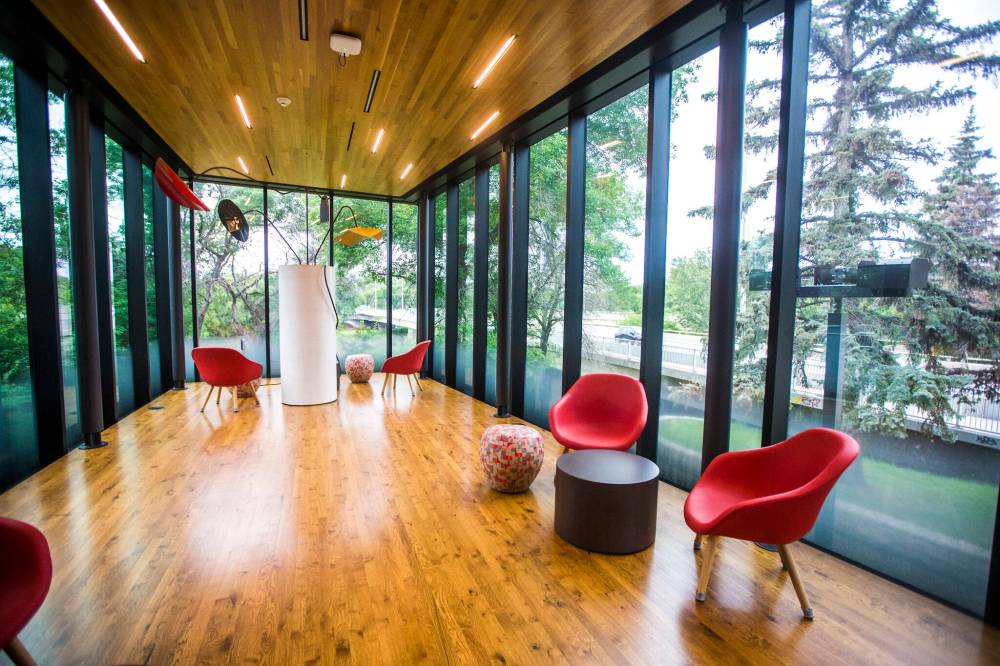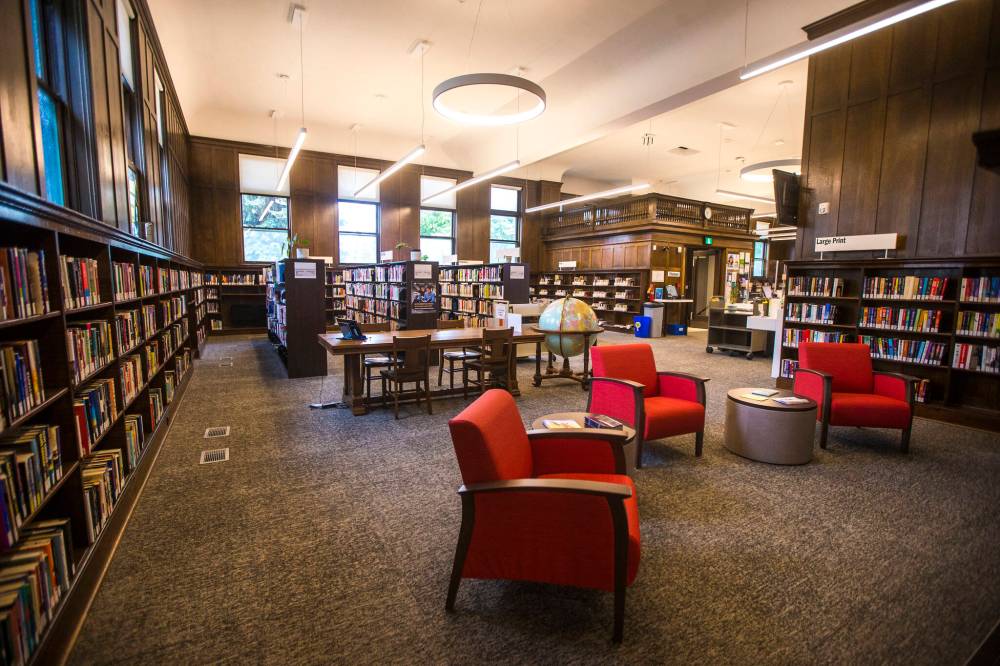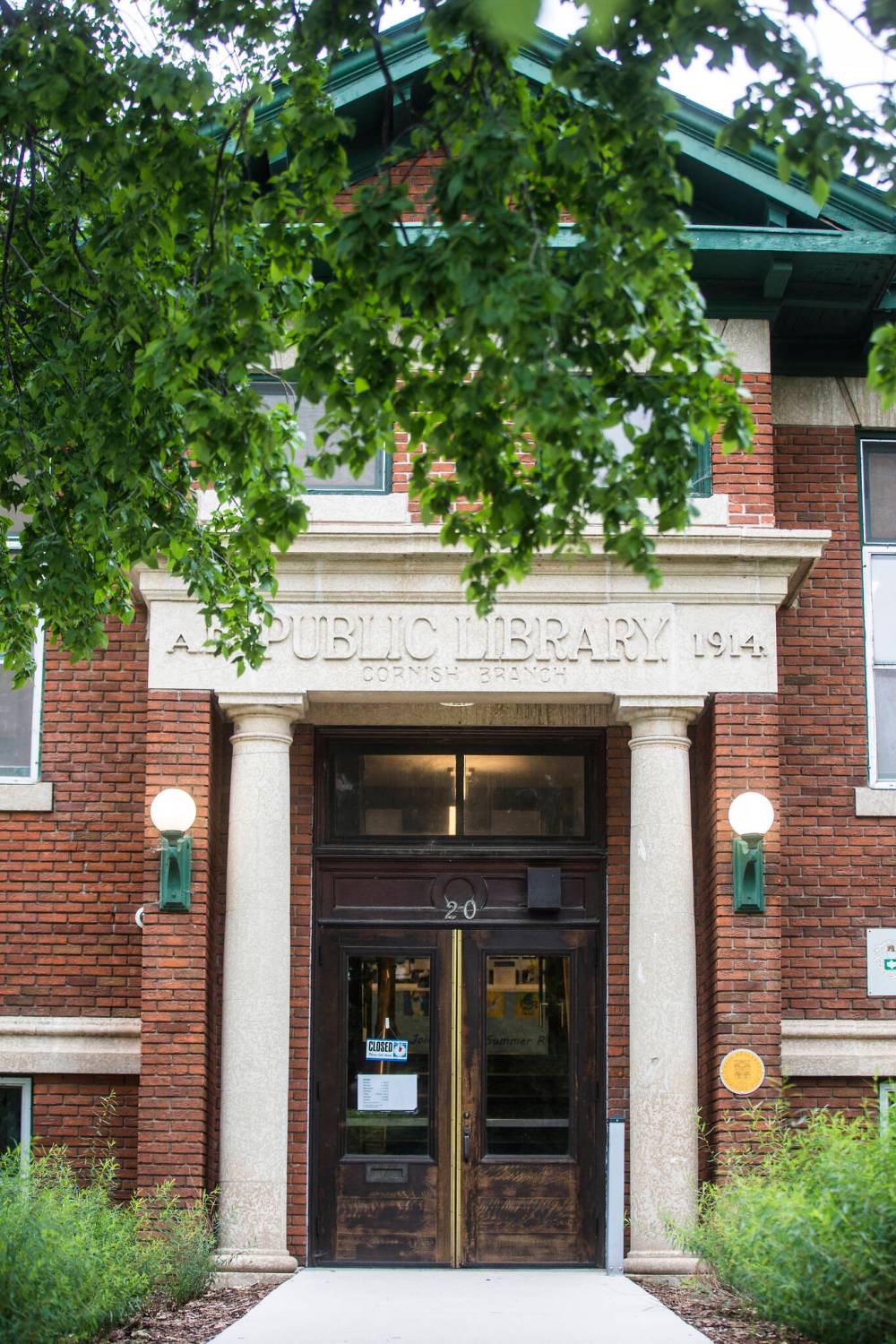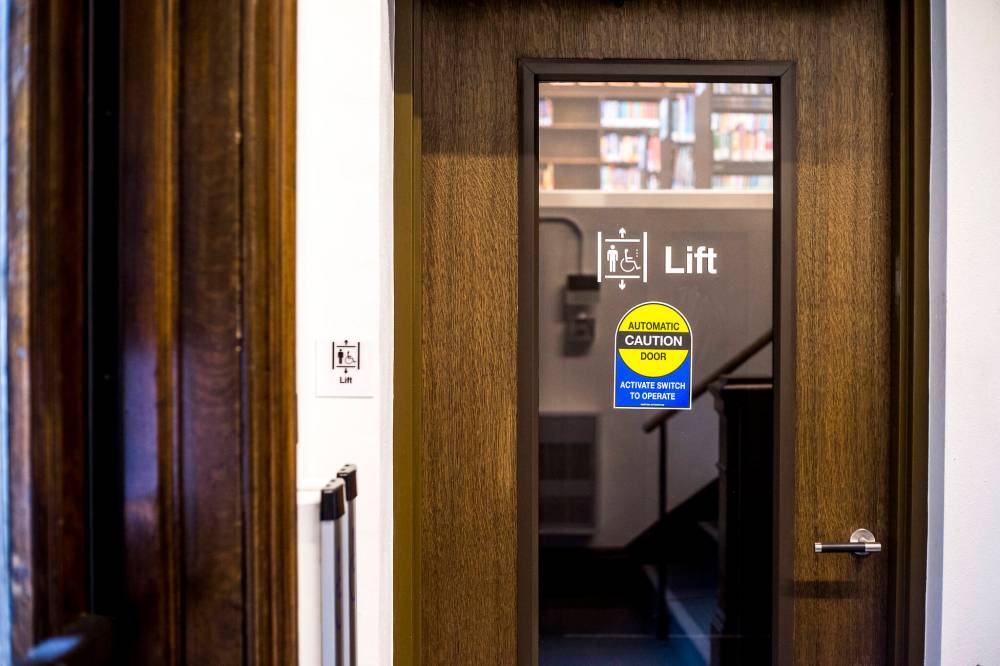An open book The Cornish Library’s updated design brings the Carnegie-funded building into the urban present
Read this article for free:
or
Already have an account? Log in here »
To continue reading, please subscribe:
Monthly Digital Subscription
$0 for the first 4 weeks*
- Enjoy unlimited reading on winnipegfreepress.com
- Read the E-Edition, our digital replica newspaper
- Access News Break, our award-winning app
- Play interactive puzzles
*No charge for 4 weeks then price increases to the regular rate of $19.00 plus GST every four weeks. Offer available to new and qualified returning subscribers only. Cancel any time.
Monthly Digital Subscription
$4.75/week*
- Enjoy unlimited reading on winnipegfreepress.com
- Read the E-Edition, our digital replica newspaper
- Access News Break, our award-winning app
- Play interactive puzzles
*Billed as $19 plus GST every four weeks. Cancel any time.
To continue reading, please subscribe:
Add Free Press access to your Brandon Sun subscription for only an additional
$1 for the first 4 weeks*
*Your next subscription payment will increase by $1.00 and you will be charged $16.99 plus GST for four weeks. After four weeks, your payment will increase to $23.99 plus GST every four weeks.
Read unlimited articles for free today:
or
Already have an account? Log in here »
Hey there, time traveller!
This article was published 23/08/2022 (1203 days ago), so information in it may no longer be current.
There’s something very optimistic and democratic about the idea that libraries should be free and available to everyone. The notion that anyone can pick out a book and take it home is such a cherished part of our civil society that we sometimes take it for granted.
Before the 1900s, however, public libraries were rare. There were private libraries owned by wealthy individuals, there were subscription libraries for which patrons paid an annual fee, and there were libraries restricted to certain groups, such as collections available to members of learned societies or Sunday school libraries that offered religious books and tracts to congregants.
The first fully free and open-access public library in Winnipeg was established in 1905 with funding from the Scottish-American industrialist and philanthropist Andrew Carnegie. That elegant structure on William Avenue is no longer in use as a library, but two smaller Carnegie-funded locations still function as beloved branch libraries, the St. John’s Library in the North End and the Cornish Library at 20 West Gate.
MIKAELA MACKENZIE / WINNIPEG FREE PRESS The Cornish Library at 20 West Gate opened in 1915 and maintains its sober red brick exterior.
The Cornish Library, which opened officially in June 1915, calls up the early 20th-century history of the public library with the solid, sober red brick of its exterior and the lofty ceilings, high windows and handsome oak and walnut trim of its symmetrical interior. Its sturdy wooden library tables were constructed to be piled high with the heavy books of serious scholars.
A recent renovation and addition by Winnipeg firm Public City Architecture, which was completed in 2021, addresses some of the challenges the 21st-century public library system faces as it adapts to contemporary social complexities and an increasingly digital and disembodied information age.
This reworking, especially a beautiful glass-and-steel-and-wood box that almost seems to hover in the air, makes a compelling case for the continued relevance of the library as a physical space to read and think, as well as a community place to connect and communicate.
MIKAELA MACKENZIE / WINNIPEG FREE PRESS A view of the river from inside the recently added glass-and-steel addition of the newly renovated Cornish Library.
Michael Dudley, who has a master’s degree in city planning as well as a library sciences degree and who works as a librarian at the University of Winnipeg, with specialty areas in urban and inner-city studies and history, describes the extent of Carnegie’s support for public libraries.
“Carnegie, one of the world’s richest men at the time, ended up giving away $350 million (which would now be roughly US$5.5 billion or $7 billion in Canadian dollars) over the course of his lifetime,” Dudley relates in a recent phone interview. “Around $60 million of that, or $76 million Canadian, went to public libraries around the world. He funded over 1,600 in the U.S. and 125 in Canada, and 111 of those libraries in Canada are in Ontario.”
Carnegie stipulated that municipalities receiving his grants had to make libraries free for all. “Carnegie had been born into extreme poverty — his father was a weaver in Scotland,” Dudley explains. “Having access to books as a young man had a huge impact on his life, and it was part of his myth of his success.
MIKAELA MACKENZIE / WINNIPEG FREE PRESS Carnegie stipulated that municipalities receiving his grants had to make libraries free for all.
“He felt it was really important for ‘the common man,’ as he put it, to have access to libraries.”
Carnegie’s secretary, James Bertram, would send out pamphlets to the municipalities with six basic plans they should stick to, Dudley says. Carnegie preferred money to be spent on books rather than ostentatious ornamentation and favoured simple rectangular plans with plain exteriors (or at least, plain for that time).
The Cornish Library, designed by local architect S. Frank Peters, consists of one main storey with a raised lower level that was used for lecture series and meetings. Its central entrance is framed by Tuscan columns, the most unadorned of the classical orders, and topped by a modest triangular pediment. The interior plan also reflects Carnegie ideals. “When you go in the main entrance, you go up the stairs and there is an open space with a reading area, and — this is really important, too — there’s a substantial area of the floorspace devoted to children,” Dudley states.
MIKAELA MACKENZIE / WINNIPEG FREE PRESS Carnegie preferred money to be spent on books rather than ostentatious ornamentation and favoured simple rectangular plans with plain exteriors.
The Cornish’s current children’s area so clearly and cheerfully embodies that access to books and learning that most parents want for their kids that it might come as a surprise that prior to the late 1800s, most libraries barred anyone under 12. Children were seen as disruptive and possibly dangerous to books. (And perhaps books were seen as potentially disruptive and dangerous to children.)
Carnegie also insisted on open stacks, another relatively new idea. Earlier libraries used the closed stack model, where a patron would submit a written request and a librarian would retrieve it.
Library patrons were now free to browse and choose the books they wanted, though “surveillance was a big part of the design” for most Carnegie libraries, Dudley adds. Shelves were usually positioned within clear sightlines of the librarian at a central desk to discourage theft. “While Carnegie promoted the uplift of the common man, he didn’t necessarily trust the common man,” as Dudley points out.
MIKAELA MACKENZIE / WINNIPEG FREE PRESS
Contradictions like this are embedded in Carnegie’s library philanthropy. The steel magnate wanted to advance the lot of ordinary workers, but his wealth was built on the backs of men who laboured under difficult and dangerous conditions. “Carnegie’s money was sometimes resisted by cities like Detroit — they resisted for a long time — because they considered the money tainted,” Dudley explains. He cites the 1892 Homestead strike in Pennsylvania, at a Carnegie-owned steel plant, which was brutally put down by the Pinkertons private security firm, as a particularly dark side of the Carnegie library legacy.
More than a century later, libraries continue to respond to their social moment. As Winnipeg architect, urban designer and visual artist Lawrence Bird writes in an article on the Cornish Library renovation for Canadian Architect: “For Public City Architecture, all projects begin with the urban condition. In their renovation of Winnipeg’s Cornish Public Library, the firm had to negotiate a particularly tricky situation.”
Bird expanded on this idea in a phone interview with the Free Press: “One thing that interested me about the project is that it’s right next door to Armstrong’s Point, one of our posher areas, but at the time the extension was being designed, there was a little encampment under the bridge.
MIKAELA MACKENZIE / WINNIPEG FREE PRESS A fence separating the library’s yard from the river was taken down at the back of the newly renovated Cornish Library and a glass-and-steel-and-wood box was added.
“So it was like the library is caught between a kind of shantytown situation and an established neighbourhood, and those are the two poles of our city. And how do you bring them together?”
Public City made some changes to the interior of the original structure to improve accessibility, with the addition of an elevator and a universal washroom. They also renovated meeting and programming rooms on the lower level. In visual terms, though, the real showstopper is that glass extension. Glass is often seen as a smart way to add space to a heritage building without overburdening or competing with the original structure, and this is a beautiful formal solution, with glass all round, running from the plane of the wood floor to the plane of the wood ceiling.
The space is serene and spare, with a few chairs and stools, as well as a commissioned work by Winnipeg artist Michael Dumontier, a founding member of influential art collective the Royal Art Lodge and an ardent bibliophile. The piece displays Dumontier’s usual exuberant minimalism, with stylized metal flowers that move — very, very slowly — in the air currents.
MIKAELA MACKENZIE / WINNIPEG FREE PRESS The central entrance of the newly renovated Cornish Library is framed by Tuscan columns.
But all that good-looking glass has a social function, too. It opens up the library and orients it in a new way to the city around it. The Cornish Library’s original heavy wooden front door faces the leafy quiet of Armstrong’s Point, but the glass addition, as Bird points out, connects the library to the shifting life of the larger city, with the traffic streaming across the Maryland bridge and people biking and walking dogs. “The people commuting into the city pass it. That big gesture it makes towards the bridge matters,” as Bird suggests.
The design also resists walling off the unhoused people who sometimes take shelter under the bridge. “It’s interesting that the designers didn’t just come up with a good idea but also persuaded the library that it was a good idea, to take down a fence that had been separating the public space of the library’s yard from the area under the bridge,” says Bird.
Libraries have changed in the last hundred years, as has our city. The design of the Cornish Library, both old and new, honours the past while confronting the present.
alison.gillmor@freepress.mb.ca

Studying at the University of Winnipeg and later Toronto’s York University, Alison Gillmor planned to become an art historian. She ended up catching the journalism bug when she started as visual arts reviewer at the Winnipeg Free Press in 1992.
Our newsroom depends on a growing audience of readers to power our journalism. If you are not a paid reader, please consider becoming a subscriber.
Our newsroom depends on its audience of readers to power our journalism. Thank you for your support.
History
Updated on Wednesday, August 24, 2022 10:44 AM CDT: Corrects photo cutline







